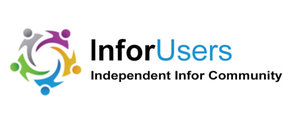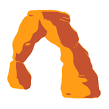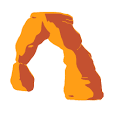Remote Patient Monitoring Solutions Can Be Costly, Confusing, and Data-Quality Challenged
Several challenges exist for broader, fuller use of remote patient monitoring (RPM) to support telehealth and in-home and acute care at-home services. An initial challenge is to convince providers that RPM data is high-quality data, especially if some of the data is patient entered. Another challenge is if the RPM devices have intuitive designs for easy use. Finally, if patients are controlling the RPM devices, how is the data on these devices secured? Another study identified the following RPM challenges:
- The lack of a full range of appropriate sensors
- The bulk weight and size of the whole system or its components (particularly in relation to patient-worn systems)
- The identification of invalid data (for example, from sensors that become detached or displaced)
- Battery life
- Available network bandwidth
- Network coverage
- The costs of data transmission via public networks
Another research article identified these RPM challenges:
- Data security—Patient confidentiality is a key patient engagement challenge.
- Data accuracy—Ensuring provider trust in the data captured and transmitted by RPM solutions is key.
- Real-time access to data—The RPM solutions should connect to Wi-Fi, Bluetooth, or cellular networks that can transmit data to providers in seconds.
- Integration—RPM data will not be useful if it can’t be effectively integrated into providers’ EHR systems.
- Cost of RPM devices—RPM devices can cost hundreds and thousands of dollars per patient. This can make ROI for RPM investments challenging.
Image- and Video-Based Vital Signs Monitoring
A 2014 study identified remote sensing of the reflectance photoplethysmogram using a video camera typically positioned one meter away from the patients’ faces is a promising method for monitoring the vital signs of patients without attaching any electrodes or sensors to them.
A systematic review of image- and video-based patient monitoring solutions from 2017 identified a model for evaluating studies of using this approach to monitor patient vital signs consisting of heart rate, respiratory rate, blood pressure, oxygen saturation rates, and temperature.
A recent study concluded that image- and video-based vital signs monitoring is just beginning to be recognized and will continue to advance with the escalation of computational resources and neural networks. (MDPI, Editorial for Special Issue: Contactless Vital Signs Monitoring, Gerard de Haan 1 and Wim Verkruysse, 24 Dec. 2019 )
Companies are emerging with solutions that can be used with smartphone cameras to accurately assess a patient’s vital signs. Emerging smartphones with image- and video-based patient monitors will disrupt the RPM market. RPM solutions requiring proprietary equipment, hubs for connecting disparate patient monitoring devices, and even patch monitors will feel some impact from these emerging solutions.
Smartphones are ubiquitous across all socioeconomic tiers, so an RPM solution that can be used with a smartphone can be used to equitably deliver healthcare services for all patient populations. Using image- and video-based patient monitoring also provides a venue for monitoring patients any time and any place for a large component of the population with cell service.
Low Cost, High Accessibility, and an Intuitive Platform Drive Adoption
Most of the world population as identified by generation tiers is experienced and comfortable using smartphones. Low-cost and intuitively designed image- and video-based applications on smartphones are likely to be quickly adopted by consumers who want an easy and always-available application to monitor vital signs. Consumer adoption will drive patient-focused healthcare providers to quickly adopt this technology to provide a greater coverage of patient populations for monitoring key vital signs, especially for high-risk patients.
A key for provider adoption success for image- and video-based vital sign monitoring applications will be the ability to support timely, efficient transmission of the patients’ vital sign data collected to provider EHR systems. These smartphone applications must comply with FHIR interoperability standards to drive rapid industry acceptance.
Emerging Vendor Solutions Look Promising
Representative emerging imaging- and video-based patient monitoring vendors include the following:
binah.ai—Real-time, medical-grade vital signs measurements after looking at the device's camera for less than one minute
The Wound Pros—Real-time, remote, video-based monitoring of vital signs to ensure the safety and well-being of patients
Anura—Solution only requires a video camera and 30 seconds to measure patient vital signs
Success Factors
- Provider organizations interested in pursuing image- and video-based patient monitoring solutions should identify key services where these solutions can be prototyped with patients who will most benefit from contactless RPM services.
- Video specifications for smartphone and tablet cameras that may be used with this technology should be used to identify manufacturers and device models that can effectively be used by patients.
- Image- and video-based patient monitoring solutions must be evaluated to ensure ease of vital sign data integration captured by these solutions with the EHR.
Summary
Image- and video-based patient monitoring solutions are poised to become a significant disruptive factor to the RPM market. Vendors who use patient monitoring devices that replicate devices used in physician offices and hospitals (e.g., blood pressure cuffs, pulse oximeters, EKG monitors, and thermometers) are at the highest risk for replacement. Providers will be looking for RPM solutions that are easily accessible and intuitively designed and provide the highest level of communications availability, data security, and data interoperability with the EHR. Smartphones, laptops, and tablets with cameras will likely be easily converted to RPM solutions that deliver a lower cost threshold for implementing and managing patient populations. Even if providers do not quickly adopt this technology, we believe consumers will, and that will eventually force providers to acquiesce in patient-focused care environments.
RPM solutions based on patch or clothing designs may not be impacted as quickly by this technology as they provide more patient flexibility in use, but we believe the cost differential will eventually drive the tipping point where image- and video-based patient monitoring becomes the dominant RPM solution.
Photo Credit: Adobe Stock, metamorworks


